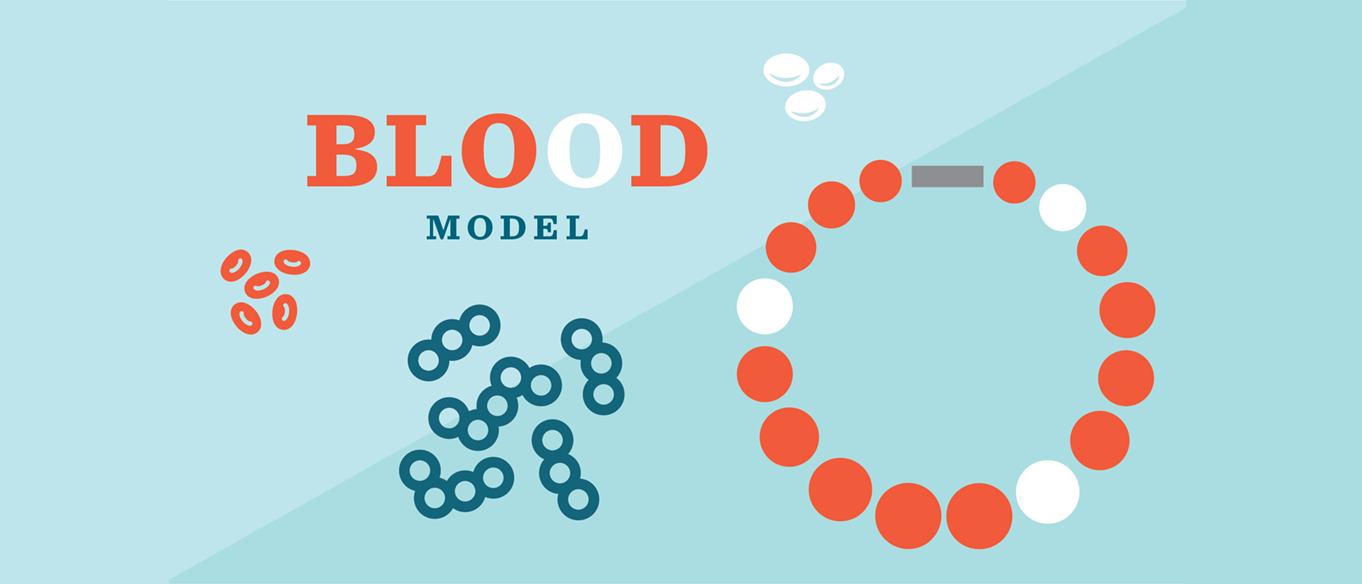
Have you ever wondered what makes up your blood? Learn about the major components of blood and their and functions as you create your very own blood model.
Age: 8+
Time: 20 minutes
Topics: red blood cell, white blood cell, platelet, models
What you need:
- Red beads, small LEGOs, or candies (for red blood cells)
- White beads, small LEGOs, or candies (for white blood cells)
- Confetti, tiny paper scraps, or sprinkles (for platelets)
- Water with one drop of yellow food coloring added, or light corn syrup (for plasma)
- Mixing bowl
- Mixing spoon
- Measuring cups or spoons
What to do:
1. Do some research. Look at the inside of your lower arm and wrist: can you see the blood vessels in it? Think about what you already know about blood. Why does blood need to travel all though your body? What does it do for you? What is blood made of?
2. Blood is made up of about 55% plasma, 44% red blood cells, 0.5% white blood cells, and 0.5% platelets. To make a model that matches those percentages, you’ll need to measure your materials using these proportions:
- 1 part platelets
- 1 part white blood cells
- 88 parts red blood cells
- 110 parts plasma
3. Decide how you will measure your materials and figure out how much of each material you will need. For example, if you measure in spoonfuls, you will need one spoonful of your platelet material and 110 spoonfuls of your plasma material. Here’s an example using cooking measures:
- 2-1/3 c. of plasma
- 1-3/4 c. of red blood cells
- 1 tsp. of white blood cells
- 1 tsp. of platelets
4. Measure and mix your materials in the bowl. Observe the mixture, and think about some of these questions:
- Is there anything that surprises you about the different amounts of materials?
- Why do you think the amount of red blood cells is much larger than that of the white blood cells?
- What parts of blood might not be represented in this model?
5. Clean up: If you used candies or other food items for this model, please do not eat them. Although they helped you learn about your blood, they are not healthy choices for your body! If you used beads or toys, wash and dry all the items before putting them away.
What’s happening?
Blood is a complex mixture of cells, nutrients, and chemicals that circulates to all the cells in your body, delivering necessary ingredients and chemical messages and carrying away waste products. In your blood model, you represented four important components of blood:
- Red blood cells carry oxygen from your lungs to your cells and carbon dioxide waste back to your lungs to be exhaled. They only live for 3 months, but your bone marrow is continually making new red blood cells.
- White blood cells fight infections by attacking or killing pathogens (germs) that enter the body. They are also the cleanup crew for dead red blood cells. White blood cells are made in your bone marrow too, but they only live for a few days to a few weeks.
- Platelets are the smallest of your blood cells. They have a sticky surface that helps blood clot and form a scab when you get a cut. Platelets are also made in your bone marrow.
- Plasma is a pale yellow, clear liquid made of 90% water. It carries dissolved nutrients and hormones to cells around the body, and then carries wastes to get filtered out of the body.
Models, like the one you used here, are important tools for understanding parts of your world that are too big, too small, too far away, or too complicated to understand directly. A good model should be similar to the system it is modeling in important or useful ways; however, a model will also have parts that behave differently or do not match the system it is modeling.

